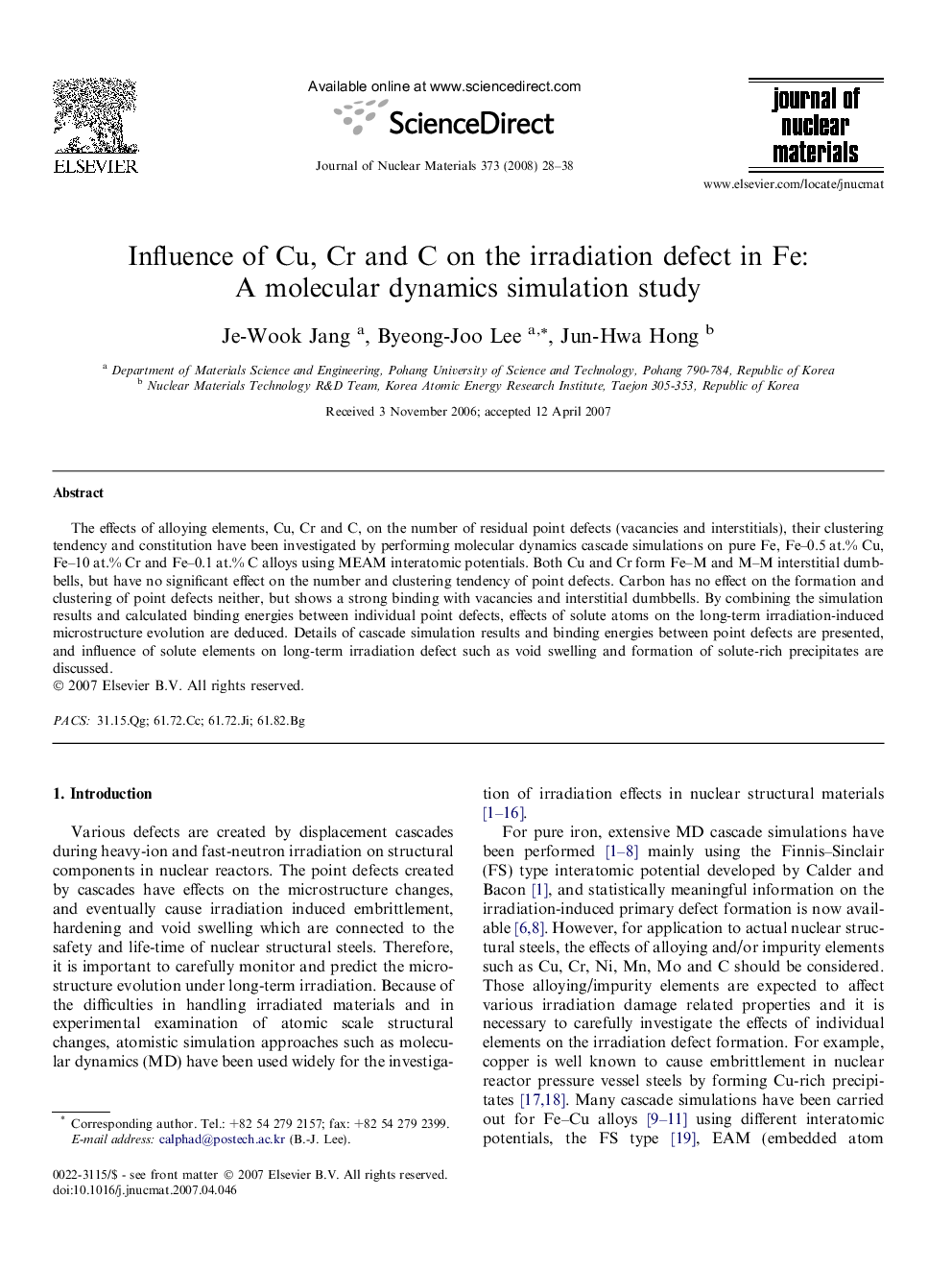| Article ID | Journal | Published Year | Pages | File Type |
|---|---|---|---|---|
| 1568763 | Journal of Nuclear Materials | 2008 | 11 Pages |
The effects of alloying elements, Cu, Cr and C, on the number of residual point defects (vacancies and interstitials), their clustering tendency and constitution have been investigated by performing molecular dynamics cascade simulations on pure Fe, Fe–0.5 at.% Cu, Fe–10 at.% Cr and Fe–0.1 at.% C alloys using MEAM interatomic potentials. Both Cu and Cr form Fe–M and M–M interstitial dumbbells, but have no significant effect on the number and clustering tendency of point defects. Carbon has no effect on the formation and clustering of point defects neither, but shows a strong binding with vacancies and interstitial dumbbells. By combining the simulation results and calculated binding energies between individual point defects, effects of solute atoms on the long-term irradiation-induced microstructure evolution are deduced. Details of cascade simulation results and binding energies between point defects are presented, and influence of solute elements on long-term irradiation defect such as void swelling and formation of solute-rich precipitates are discussed.
